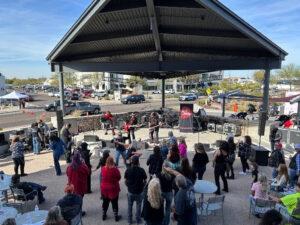Featured Editorials
-
What Mesa’s Mekong Plaza Expansion Shows Us About How Cultural Diversity Drives Economic Growth
While Scottsdale gets plenty of attention for its upscale dining scene and luxury shopping, something equally exciting is happening just down the road in Mesa…and it’s a reminder that the Valley’s most interesting growth often comes as a result of its own maturity and diversity. MesaR...Read more
-
Guest Editorial: Treating Your Money As If It Were Our Own
By Councilwoman Jan Dubauskas Dear Friends, In business and in our personal lives, we seek the best deal – the biggest bang for our bucks. And, we shake our heads at cushy government contracts. This week, Scottsdale City Council faced that exact situation. We are working to revitalize our Old ...Read more
-
Scottsdale’s Finest Tradition: Blackout Wednesday Lives Up to Its Name (and We’re Not Judging)
Ah, Blackout Wednesday…or as the more refined among us prefer, “Drinksgiving.” The unofficial drinking holiday drew massive crowds to Scottsdale and Phoenix bars on Thanksgiving Eve, with venues like Coach House reporting their busiest night of the year. If you ventured anywhere near Old...Read more
Marketplace
-
Local Valley Bands Compete Head-To-Head for Four Exclusive Slots to Perform at Arizona Bike Week in April
The Public is Invited to Watch and Judge the Final Competition from 10:00 a.m. to 6:00 p.m. Saturday, Dec. 6 at Harley-Davidson of Scottsdale Arizona Bike Week, the premier motorcycle rally in the Southwest, is gearing up for an electrifying music showdown as ten local bands compete for four prized...Read more
-
Fall Colors are at Their Peak Now at Boyce Thompson Arboretum
In addition to the stunning fall leaves, the Arboretum is hosting a number of enjoyable events from late November through December, including Nature Play for Kids, Yoga in the Garden and visits from Jolly St. Nick Here’s some great news for fans of fall foliage: you don’t have to travel to New Engla...Read more
-
Scottsdale Ferrari, UBS, NetJets, Optima & City of Scottsdale Among Sponsors of Largest New American Art Fair in Decades
Second Annual Art Fair Set to Return to WestWorld March 19 – 22, 2026, With All-Star Partners Scottsdale Art Week Presented by Scottsdale Ferrari will return to WestWorld March 19 – 22, 2026, with the City of Scottsdale joining as a prominent sponsor of the largest new American art fair in decades. ...Read more
Scrum
-
A Victory for All of Scottsdale. Thank You For Voting YES YES to Protect The McDowell Sonoran Preserve, Improve Scottsdale Parks, and Enhance Public Safety
By Mary Manross, Former Scottsdale Mayor and Chairwoman for Vote YES YES Scottsdale PAC and Carla, Preserve Pioneer and Campaign Coordinator for Vote YES YES Scottsdale PAC In most campaigns there are winners and losers. Not when it comes to the passage of Propositions 490 and 491 in Scottsdale whic...Read more
-
VOTE YES-YES FOR YOUR SAFETY
By Carla (Carla), Preserve Pioneer This year Scottsdale was fortunate when it came to wildfires. Next year we might not be so lucky. As every summer gets hotter and drier, nature and human caused fires are a fact of life in Scottsdale and our Preserve. Thanks to the quick response and hard work of o...Read more
-
Exclusive AZ Free News & Data Orbital Poll: Trump Holds Narrow Lead In Arizona As Economy, Border Dominate
Data Orbital, in conjunction with AZ Free News, is pleased to announce the results of its latest statewide, live caller survey of likely General Election Voters. The survey was conducted from September 7th 2024 – September 9th 2024. The survey measured support for candidates in Arizona’s Presi...Read more
Marketplace
The Public is Invited to Watch and Judge the Final Competition
from 10:00 a.m. to 6:00 p.m. Saturday, Dec. 6 at Harley-Davidson of Scottsdale
Arizona Bike Week, the premier motorcycle rally in the Southwest, is gearing up for an electrifying music showdown as ten local bands compete for four prized performance slots at the HandleBar Saloon during the upcoming rally at WestWorld of Scottsdale, April 8 – 12, 2026.
The public is invited to come out to this FREE event and cast their votes at the final competition, which will take place from 10:00 a.m. to 6:00 p.m. Saturday, Dec. 6 at the iconic Harley-Davidson of Scottsdale, located at 15656 N Hayden Rd, Scottsdale, AZ 85260.
Arizona Bike Week receives well over a hundred inquiries each year from talented bands eager to perform at the rally. The Rock Out to AZ Bike Week contest was created to address this overwhelming response and showcase the state’s diverse musical talent. This will be the third annual event and producers are expecting around 2,000 in attendance.
 The ten Valley bands that will be competing are Bad Reputation, BadJune, Brownedog Blues Band, Doubleblind, Great Black Swamp, Last Train to Juarez, Magnum Axxe, Miss Conduct, Plum and Vertigo. These popular, local bands have already made it through the first round of online voting, which started with 24 bands, and are now moving onto the finals.
The ten Valley bands that will be competing are Bad Reputation, BadJune, Brownedog Blues Band, Doubleblind, Great Black Swamp, Last Train to Juarez, Magnum Axxe, Miss Conduct, Plum and Vertigo. These popular, local bands have already made it through the first round of online voting, which started with 24 bands, and are now moving onto the finals.
They will compete for the audience’s favor, with attendees having the unique opportunity to vote in person for their favorite acts.
Event-goers can expect an exciting day of music, motorcycles, and more. Each band will showcase its talent with a 20-minute set, and voting will be conducted exclusively in person. Each attendee can vote one time, for up to four bands.
In addition to the musical showdown, the event will feature food trucks, a bar, a custom bike show, an indoor scavenger hunt, a bikini bike wash and a chance to win a $1,500 gift card – ensuring a vibrant atmosphere for both music and motorcycle enthusiasts.
Lisa Cyr, event producer of Arizona Bike Week, expressed her enthusiasm for the competition, stating, “Rock Out to AZ Bike Week has become a cornerstone in our efforts to celebrate and support the incredible musical talent that Arizona has to offer. This competition provides a stage for local bands and allows our audience to actively participate in shaping the entertainment lineup for Arizona Bike Week. We can’t wait to see which bands will rock the stage this year.”
Arizona Bike Week invites everyone to come out and experience the energy, passion, and talent of the local music scene. Rock Out to AZ Bike Week promises to be an unforgettable event, showcasing the best of Arizona’s musical talent and adding a dynamic element to the upcoming rally.
Rock Out to AZ Bike Week is a free event, but if you’d like to learn more about Arizona Bike Week or purchase tickets to watch these winning bands and the headline concerts at the rally in April, please visit: https://azbikeweek.com/
For more information about Rock Out to AZ Bike Week, please be sure to follow Arizona Bike Week on Instagram and Facebook.
https://www.facebook.com/
https://www.instagram.com/
For more information on Arizona Bike Week, call (480) 644-8191 or visit www.AZbikeweek.com.
In addition to the stunning fall leaves, the Arboretum is hosting a number of enjoyable events from late November through December, including Nature Play for Kids, Yoga in the Garden and visits from Jolly St. Nick
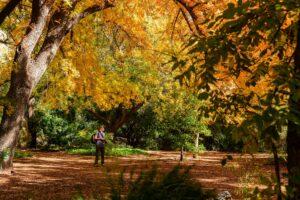
Here’s some great news for fans of fall foliage: you don’t have to travel to New England in order to see autumn trees at the height of their colorful splendor.
 Instead, make the scenic drive to Boyce Thompson Arboretum, 37615 E Arboretum Way, Superior, AZ 85173 Superior, where Mother Nature is preparing to put on an incredible autumnal show of reds, oranges, yellows and golds.
Instead, make the scenic drive to Boyce Thompson Arboretum, 37615 E Arboretum Way, Superior, AZ 85173 Superior, where Mother Nature is preparing to put on an incredible autumnal show of reds, oranges, yellows and golds.
“The three peak weeks of fall colors are from the end of November to the beginning of December, and the scenery here is truly magical” said Kim Gray, Executive Director of the Boyce Thompson Arboretum. “Because Black Friday is traditionally our busiest day for visitors who are here to see the gorgeous fall foliage, we are staying open late Thanksgiving weekend, with the last admission at 9 p.m.”
For visitors who would like their four-legged friends to experience the Arboretum too, Gray said well-behaved dogs on a 6-foot or shorter leash are welcome to visit.
“We are also hosting a Food Drive during late November and December,” Gray said. “Visitors can bring shelf-stable foods like tuna, canned chicken, pasta, soup, chili, peanut butter and canned vegetables, and everything will be donated to the Superior Food Bank.”
In addition to admiring and photographing the beautiful fall leaves, visitors are welcome to take advantage of a number of late fall and winter programs and events at the Arboretum – including visits from Santa Claus. They are:
number of late fall and winter programs and events at the Arboretum – including visits from Santa Claus. They are:
Glass in Flight – This immersive outdoor sculpture exhibit was created by renowned Tucson-based artist Alex Heveri. Featuring over 17 dazzling sculptures made of hand-cut, hand-faceted Dalle de Verre glass set in powder-coated steel, this exhibit captures the magic of nature’s tiniest pollinators—blown up to monumental scale. Walk among monarchs, beetles, and hummingbirds that radiate color and light. Now through January 30, 2026, during regular hours.
Glass in Flight at Night – Come experience the dazzling Glass in Flight exhibit at night. With strategic lighting and nightfall as the backdrop, these larger-than-life glass insects take on a whole new dimension—radiant, surreal, and unforgettable. Watch butterflies shimmer, dragonflies pulse with color, and beetles gleam like jewels in the dark. From now to January from 5 p.m. to 10 p.m. There will be no evening hours on November 8.
Meet the Artist – Glass in Flight – Come meet Alex Heveri, the artist behind Glass in Flight 2. Heveri, a Tucson-based artist and sculptor, will talk about the process and inspiration behind her larger-than-life glass pollinators. Guests will be guided on a tour of some of the pieces in the Glass in Flight 2 collection and have a chance to ask Heveri questions about the exhibit. November 15 from 5 p.m. to 7 p.m. and November 16 from 10 a.m. to 12 p.m.
Nature Play – Unplug and reconnect with Nature in the Children’s Garden, where families can escape the screens and dive into the wonders of the great outdoors. Bring your kids to explore, play and learn using seasonal and nature-themed activities for families of all ages and abilities. Every Saturday, November 15, 22 and 29, and December 6, 13 and 20 from 10 a.m. to 12 p.m.
 Forest Bathing – Also known as Shinrin-yoku, forest bathing is the practice of spending time in nature for the purpose of enhancing health, wellness, and happiness. During class, participants will be led on a 2-1/2 hour walk through the century-old trees of the Arboretum with a series of guided “invitations”, closing with a tea ceremony. December 6 from 9 a.m. to 11:30 a.m. and from 12:30 p.m. to 3 p.m.
Forest Bathing – Also known as Shinrin-yoku, forest bathing is the practice of spending time in nature for the purpose of enhancing health, wellness, and happiness. During class, participants will be led on a 2-1/2 hour walk through the century-old trees of the Arboretum with a series of guided “invitations”, closing with a tea ceremony. December 6 from 9 a.m. to 11:30 a.m. and from 12:30 p.m. to 3 p.m.
Paint at the Arboretum – Prickly Pear Cactus – Unleash your creativity amongst the inspiring beauty of Boyce Thompson Arboretum. Under the guidance of artist Carla Keaton, you will paint a unique masterpiece to take home. Whether you’re an experienced painter or picking up a brush for the first time, all skill levels are invited to join. All supplies are provided. November 15 from 2:30 p.m. to 4:30 p.m.
Yoga in the Garden – Relax and restore in this all-levels yoga class held outside in the tranquil setting of the Arboretum. During this class, participants are shown how to mindfully move through gentle postures with breath awareness to promote relaxation, flexibility, and circulatory health. November 22, December 10, and December 20 from 9 a.m. to 10 a.m.
Santa visits the Arboretum – Santa is coming to the Arboretum! Stop by the Smith Greenhouses and get a photo with Santa. Bring your family, including four-legged family members, for fun holiday photos. Digital copies will be available for purchase. December 6 and 7 from 10 a.m. to 2 p.m.
Holiday Hangout – Celebrate the season at the Holiday Hangout. Shop local vendors and find one-of-a-kind gifts at our holiday marketplace. Treats and merchandise will also be available for purchase. December 6, 13, 14, 20 and 21 from 10 a.m. to 3 p.m.
Branching Out Speaker Series – Hummingbirds, Our Avian Jewels – Arizona is the “hummingbird capital” of the United States, with more species than any other state. In this program by nature photographer Cindy Marple, attendees will learn about the large hummingbird family and their unique lifestyles, as well as how to identify the local species in the Valley. December 12 from 3:30 p.m. to 4:30 p.m.
Holiday Floral Design – Celebrate the holiday season by handcrafting a beautiful centerpiece filled with fresh-cut evergreens and vibrant flowers. With the guidance from the instructor, you will design a one-of-a-kind arrangement perfect for your holiday table. No experience necessary; this class is open to all skill levels. Ages 18 and up. December 13 from 10 a.m. to 12 p.m.
To check out the event calendar for late fall and winter, which includes information about ticket prices and, if applicable, how to register, please visit https://btarboretum.org/events/.
For more information on Boyce Thompson Arboretum – located at 37615 E Arboretum Way
Superior, AZ 85173 – and their upcoming events, memberships, or conservation initiatives, visit www.btarboretum.org, call 520.689.2723, or connect with them on Facebook, Instagram or X (formerly Twitter).
ABOUT BOYCE THOMPSON ARBORETUM:
Boyce Thompson Arboretum is Arizona oldest and largest botanical garden, as well one of Arizona’s top tourism draws. Since being founded by mining magnate William Boyce Thompson in 1924, the Arboretum has blossomed into a total 372 acres and nearly five miles of trails, 135 acres of gardens and a total of 20,000+ desert plants from the United States, Mexico, Australia, Madagascar, India, China, Japan, Israel, South America, the Middle East, Africa, the Mediterranean, and the Arabian Peninsula. For more information, visit www.btarboretum.org.
Second Annual Art Fair Set to Return to WestWorld March 19 – 22, 2026, With All-Star Partners

Scottsdale Art Week Presented by Scottsdale Ferrari will return to WestWorld March 19 – 22, 2026, with the City of Scottsdale joining as a prominent sponsor of the largest new American art fair in decades. The city joins a powerhouse roster of other sponsors and community partners, including title sponsor Scottsdale Ferrari and newcomers NetJets and Optima.
 Scottsdale Mayor Lisa Borowsky spoke about the value and attention the event brings to the community, which has become the nation’s fastest-growing city for millionaires and an increasingly influential presence in the global arts scene.
Scottsdale Mayor Lisa Borowsky spoke about the value and attention the event brings to the community, which has become the nation’s fastest-growing city for millionaires and an increasingly influential presence in the global arts scene.
“Scottsdale has long been recognized as a world-renowned tourist destination, boasting an established and thriving art market. Scottsdale Art Week builds on this foundation and has quickly established itself as an emerging art fair for galleries from across the world to engage new collectors, showcase artists and grow their presence in the Southwest,” said Mayor Borowsky.
With 120 galleries from around the world, the timing of Scottsdale Ferrari Art Week couldn’t be more ideal.
“Scottsdale Art Week showcases the creativity, culture and beauty of this community, giving the art world a glimpse of what makes Scottsdale such a special place to live, work and create,” said Scottsdale Art Week Fair Director Amy Gause. “We welcome the energy and tourism the event will bring to the city in the spring, which is one of the best times of the year to enjoy everything this area has to offer.”
Scottsdale Art Week’s new sponsors join an evolving list of civic-minded businesses and partners, among them:
-
- Gila River Resorts & Casinos
- UBS
- Heritage Auctions
- NetJets
- City of Scottsdale
- Optima
- Sanderson Lincoln
- Griggs Group powered by the Altman Brothers
- Breakthru Beverage
- RevTech
- F. Francis & Dionne Najafi Pivotal Foundation
- Veuve Clicquot
- Stella Artois
- Mark-Taylor Residential
- Art Solutions and Installations
- Candelaria Design Associates
- Neiman Marcus
 “It’s because of our community partners that we can provide an event of this size and scale, and we’re grateful for the support that helps us cement Scottdale’s place on the global arts stage,” said Gause. “The 2025 edition kicked off stronger than even we anticipated, and we’re excited to build an exceptional 2026 edition with the help of our sponsors and community partners.”
“It’s because of our community partners that we can provide an event of this size and scale, and we’re grateful for the support that helps us cement Scottdale’s place on the global arts stage,” said Gause. “The 2025 edition kicked off stronger than even we anticipated, and we’re excited to build an exceptional 2026 edition with the help of our sponsors and community partners.”
So far, more than three-fourths of the exhibitor booths have already sold out ahead of the late spring event, with more than 95 galleries from 15 countries, four continents and counting already signed on to participate. Fair guests can anticipate a wide range of blue-chip, modern and contemporary works as well as historic, Indigenous and Western art, giving collectors and visitors a diverse assortment of exhibits to explore.
Scottsdale Art Week 2026 will also include a new “Design Day” element, delivering a full day of programming centered around design, innovation and its relationship to fine art.
For more about Scottsdale Art Week or to purchase tickets, visit www.scottsdaleartweek.com.
In addition to the stunning fall leaves, the Arboretum is hosting a number of enjoyable events from late November through December, including Nature Play for Kids, Yoga in the Garden and visits from Jolly St. Nick

Here’s some great news for fans of fall foliage: you don’t have to travel to New England in order to see autumn trees at the height of their colorful splendor.
Instead, make the scenic drive to Boyce Thompson Arboretum, 37615 E Arboretum Way, Superior, AZ 85173 Superior, where Mother Nature is preparing to put on an incredible autumnal show of reds, oranges, yellows and golds.
“The three peak weeks of fall colors are from the end of November to the beginning of December, and the scenery here is truly magical” said Kim Gray, Executive Director of the Boyce Thompson Arboretum. “Because Black Friday is traditionally our busiest day for visitors who are here to see the gorgeous fall foliage, we are staying open late Thanksgiving weekend, with the last admission at 9 p.m.”
For visitors who would like their four-legged friends to experience the Arboretum too, Gray said well-behaved dogs on a 6-foot or shorter leash are welcome to visit.
“We are also hosting a Food Drive during late November and December,” Gray said. “Visitors can bring shelf-stable foods like tuna, canned chicken, pasta, soup, chili, peanut butter and canned vegetables, and everything will be donated to the Superior Food Bank.”
In addition to admiring and photographing the beautiful fall leaves, visitors are welcome to take advantage of a number of late fall and winter programs and events at the Arboretum – including visits from Santa Claus. They are:
 Glass in Flight – This immersive outdoor sculpture exhibit was created by renowned Tucson-based artist Alex Heveri. Featuring over 17 dazzling sculptures made of hand-cut, hand-faceted Dalle de Verre glass set in powder-coated steel, this exhibit captures the magic of nature’s tiniest pollinators—blown up to monumental scale. Walk among monarchs, beetles, and hummingbirds that radiate color and light. Now through January 30, 2026, during regular hours.
Glass in Flight – This immersive outdoor sculpture exhibit was created by renowned Tucson-based artist Alex Heveri. Featuring over 17 dazzling sculptures made of hand-cut, hand-faceted Dalle de Verre glass set in powder-coated steel, this exhibit captures the magic of nature’s tiniest pollinators—blown up to monumental scale. Walk among monarchs, beetles, and hummingbirds that radiate color and light. Now through January 30, 2026, during regular hours.
Glass in Flight at Night – Come experience the dazzling Glass in Flight exhibit at night. With strategic lighting and nightfall as the backdrop, these larger-than-life glass insects take on a whole new dimension—radiant, surreal, and unforgettable. Watch butterflies shimmer, dragonflies pulse with color, and beetles gleam like jewels in the dark. From now to January from 5 p.m. to 10 p.m. There will be no evening hours on November 8.
Meet the Artist – Glass in Flight – Come meet Alex Heveri, the artist behind Glass in Flight 2. Heveri, a Tucson-based artist and sculptor, will talk about the process and inspiration behind her larger-than-life glass pollinators. Guests will be guided on a tour of some of the pieces in the Glass in Flight 2 collection and have a chance to ask Heveri questions about the exhibit. November 15 from 5 p.m. to 7 p.m. and November 16 from 10 a.m. to 12 p.m.
Nature Play – Unplug and reconnect with Nature in the Children’s Garden, where families can escape the screens and dive into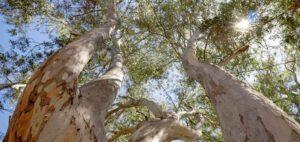 the wonders of the great outdoors. Bring your kids to explore, play and learn using seasonal and nature-themed activities for families of all ages and abilities. Every Saturday, November 15, 22 and 29, and December 6, 13 and 20 from 10 a.m. to 12 p.m.
the wonders of the great outdoors. Bring your kids to explore, play and learn using seasonal and nature-themed activities for families of all ages and abilities. Every Saturday, November 15, 22 and 29, and December 6, 13 and 20 from 10 a.m. to 12 p.m.
Forest Bathing – Also known as Shinrin-yoku, forest bathing is the practice of spending time in nature for the purpose of enhancing health, wellness, and happiness. During class, participants will be led on a 2-1/2 hour walk through the century-old trees of the Arboretum with a series of guided “invitations”, closing with a tea ceremony. December 6 from 9 a.m. to 11:30 a.m. and from 12:30 p.m. to 3 p.m.
Paint at the Arboretum – Prickly Pear Cactus – Unleash your creativity amongst the inspiring beauty of Boyce Thompson Arboretum. Under the guidance of artist Carla Keaton, you will paint a unique masterpiece to take home. Whether you’re an experienced painter or picking up a brush for the first time, all skill levels are invited to join. All supplies are provided. November 15 from 2:30 p.m. to 4:30 p.m.
 Yoga in the Garden – Relax and restore in this all-levels yoga class held outside in the tranquil setting of the Arboretum. During this class, participants are shown how to mindfully move through gentle postures with breath awareness to promote relaxation, flexibility, and circulatory health. November 22, December 10, and December 20 from 9 a.m. to 10 a.m.
Yoga in the Garden – Relax and restore in this all-levels yoga class held outside in the tranquil setting of the Arboretum. During this class, participants are shown how to mindfully move through gentle postures with breath awareness to promote relaxation, flexibility, and circulatory health. November 22, December 10, and December 20 from 9 a.m. to 10 a.m.
Santa visits the Arboretum – Santa is coming to the Arboretum! Stop by the Smith Greenhouses and get a photo with Santa. Bring your family, including four-legged family members, for fun holiday photos. Digital copies will be available for purchase. December 6 and 7 from 10 a.m. to 2 p.m.
Holiday Hangout – Celebrate the season at the Holiday Hangout. Shop local vendors and find one-of-a-kind gifts at our holiday marketplace. Treats and merchandise will also be available for purchase. December 6, 13, 14, 20 and 21 from 10 a.m. to 3 p.m.
Branching Out Speaker Series – Hummingbirds, Our Avian Jewels – Arizona is the “hummingbird capital” of the United States, with more species than any other state. In this program by nature photographer Cindy Marple, attendees will learn about the large hummingbird family and their unique lifestyles, as well as how to identify the local species in the Valley. December 12 from 3:30 p.m. to 4:30 p.m.
Holiday Floral Design – Celebrate the holiday season by handcrafting a beautiful centerpiece filled with fresh-cut evergreens and vibrant flowers. With the guidance from the instructor, you will design a one-of-a-kind arrangement perfect for your holiday table. No experience necessary; this class is open to all skill levels. Ages 18 and up. December 13 from 10 a.m. to 12 p.m.
To check out the event calendar for late fall and winter, which includes information about ticket prices and, if applicable, how to register, please visit https://btarboretum.org/events/.
For more information on Boyce Thompson Arboretum – located at 37615 E Arboretum Way
Superior, AZ 85173 – and their upcoming events, memberships, or conservation initiatives, visit www.btarboretum.org, call 520.689.2723, or connect with them on Facebook, Instagram or X (formerly Twitter).
Situated on 4.2 Acres, Estate Includes Go-Kart Track, Golf Simulator, Putting Green Wellness Center & Walk-In Armory, Among Numerous Other Amenities

Compass luxury real estate leaders Frank Aazami and Bill Bulaga of Private Client Group have listed the ultimate $20 million sports and entertainment estate in Gilbert, Arizona and one that redefines what it means to live, play and recreate without leaving home.
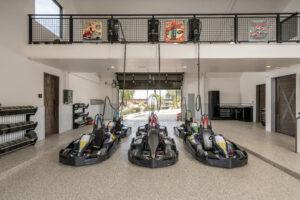 Located at 21423 S 147th St., this seven-bedroom, nine-bathroom sports and entertainment compound combines five dedicated areas and features an array of over-the-top amenities, from an underground shooting range and walk-in armory to a Zen garden, wellness center and private go-kart track.
Located at 21423 S 147th St., this seven-bedroom, nine-bathroom sports and entertainment compound combines five dedicated areas and features an array of over-the-top amenities, from an underground shooting range and walk-in armory to a Zen garden, wellness center and private go-kart track.
Spanning 4.2 acres, the palatial estate includes a 9,236-square-foot main residence, a 6,610-square-foot recreational facility, a 5,660-square-foot wellness center, a 2,480-square-foot go-kart barn and racetrack, and a cultivated organic garden complete with koi ponds and exotic animal enclosures. Designed with luxury, recreation and wellness in mind, the gated property also counts a dance studio, yoga studio, dry sauna and full basketball court among its ample amenities.
“There are luxury real estate listings, and then there are properties that completely transcend that category,” said Aazami, noting that Arizona’s luxury real estate market has shown strong momentum in recent months. “Every inch of this estate encourages play, inspires wellness and caters to athletes, fitness enthusiasts and anyone who loves to entertain.”
that Arizona’s luxury real estate market has shown strong momentum in recent months. “Every inch of this estate encourages play, inspires wellness and caters to athletes, fitness enthusiasts and anyone who loves to entertain.”
The compound’s main residence boasts expansive, well-equipped living areas with high ceilings, glass walls, a theater room and a private roof deck, with notable features ranging from a two-story designer closet to four spacious guest suites. A state-of-the-art chef’s kitchen caters to home cooks and those who love hosting, while a pool, playground, heated spa and 1,056-square-foot covered patio with its own outdoor kitchen allows for easy indoor-outdoor entertaining.
 A separate, mixed-use structure dubbed “The Hideaway” acts as the ultimate escape for fitness enthusiasts, with a home gym, indoor turf area, golf simulator, putting green and gaming lounge giving residents and guests ample space to spread out and stay active, regardless of outside conditions or temperatures. An upstairs guest suite features a full bedroom, bath and kitchenette, while a “toy barn” area gives automotive enthusiasts plenty of room to store and display prized vehicles while protecting them from the heat and sun.
A separate, mixed-use structure dubbed “The Hideaway” acts as the ultimate escape for fitness enthusiasts, with a home gym, indoor turf area, golf simulator, putting green and gaming lounge giving residents and guests ample space to spread out and stay active, regardless of outside conditions or temperatures. An upstairs guest suite features a full bedroom, bath and kitchenette, while a “toy barn” area gives automotive enthusiasts plenty of room to store and display prized vehicles while protecting them from the heat and sun.
A large health and wellness center also occupies its own structure on the compound, boasting a spa-level fitness facility with red light and water therapy, a cold plunge and hot tub, a massage room, saunas and locker rooms. The health and wellness center also features a private upstairs loft area complete with a bedroom and full bath, serving as a peaceful, private getaway for guests or live-in staff.
Also included are a go-kart barn and racetrack, an underground walk-in armory and shooting range, a fully covered basketball court and a carefully manicured organic garden brimming over with fresh herbs, citrus and fruit trees and flowers. The estate also includes covered parking for 14 vehicles, including five fully enclosed garage spaces plus another nine under a carport.
court and a carefully manicured organic garden brimming over with fresh herbs, citrus and fruit trees and flowers. The estate also includes covered parking for 14 vehicles, including five fully enclosed garage spaces plus another nine under a carport.
“This compound truly is the ultimate getaway for anyone looking to live and play in the lap of luxury,” Bulaga said. “It’s a place where you can kick back, entertain and enjoy everyday life without limits.”
For more about Compass, visit Compass.com.
Featured Editorials
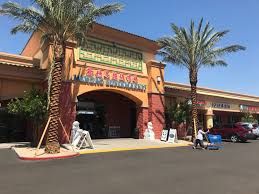
Photo Credit: AZ Central
While Scottsdale gets plenty of attention for its upscale dining scene and luxury shopping, something equally exciting is happening just down the road in Mesa…and it’s a reminder that the Valley’s most interesting growth often comes as a result of its own maturity and diversity.
Mesa’s Asian District recently completed a $10 million expansion of Mekong Plaza, adding twelve new businesses and 32,000 square feet of retail and dining space. The project brings approximately 200 new jobs to the area and features exciting additions like Haidilao Hot Pot and Udon Shin, alongside more than 100 specialty shops serving the region’s growing Asian American community.
What makes Mekong Plaza particularly significant is its accessibility and inclusiveness. The plaza is directly accessible via Valley Metro light rail and bus routes, making it a true regional destination rather than an exclusive enclave. You don’t need a luxury car to experience authentic Vietnamese pho, browse specialty Asian grocers, or enjoy legitimate hot pot; you just need curiosity and a transit pass.
For Scottsdale residents who sometimes wonder if the Valley offers enough cultural depth beyond resort spas and steakhouses, Mesa’s Asian District provides a compelling answer. It’s a 20-minute drive from Old Town Scottsdale, yet it offers experiences you simply can’t replicate at another upscale mall or lifestyle center.
The expansion also represents smart urban planning. Rather than generic big-box retail or yet another strip mall, Mesa invested in cultivating a genuine cultural destination that serves both the local Asian American community and draws visitors from across the Valley. Mayor Mark Freeman emphasized that these “strong community partnerships” make Mesa a great place to live, with Chinese and Japanese staples enhancing the city’s appeal.
This is the kind of development that benefits everyone. Small business owners get opportunities to grow, the local economy diversifies, residents gain access to authentic cuisine and specialty goods, and the broader community becomes more culturally connected.
Scottsdale has its strengths: world-class resorts, art galleries, and fine dining. But the Valley thrives when different cities contribute their unique character. Mesa’s investment in Mekong Plaza shows that the most exciting growth doesn’t always come from luxury developments. Sometimes it comes from celebrating the communities already here and giving them room to flourish.
Next time you’re planning dinner, skip the usual Scottsdale spots and head east; explore the fruits of our beautifully diverse metroplex. Your taste buds, as well as your understanding of what makes the Valley special, will thank you.
By Councilwoman Jan Dubauskas

Dear Friends,
In business and in our personal lives, we seek the best deal – the biggest bang for our bucks. And, we shake our heads at cushy government contracts.
This week, Scottsdale City Council faced that exact situation. We are working to revitalize our Old Town area. And one aspect of it is a $1.3M advertising budget that will bring locals to dine, shop, and play in Old Town.
We were very excited for the opportunity to have a tremendous impact on Old Town… until we saw the contract. Of the $1.3M – after expenses, overhead, commissions – it was expected only 1/3rd of our dollars would actually go toward advertising.
Scottsdale deserves better than that! In the meeting, I highlighted these expense issues and urged my colleagues to reject the contract so that we can get a better deal for Scottsdale. I made the motion to deny the contract and although some wished to proceed, practical business-sense won the day.
My thanks to Councilwoman Littlefield, Councilman Graham and Vice Mayor Kwasman for standing strong throughout the session on this issue. We asked the city to do better and get more for your dollars.
And guess what?! The very next morning, the vendor reached out to us, offering to sharpen the pencil and deliver measurable results for Scottsdale.
Treating your dollars like we would treat our own – and being willing to say NO works. We are delivering results for you.
Christmas At The Quarter
The more than 100 retail, dining, and entertainment businesses located in the Scottsdale Quarter welcomed the Christmas season by hosting the Santa Social. The event included photo opportunities with Santa, children’s entertainment, face painting and a variety of holiday crafts, games and music. Visits and photos with Santa will continue through Wednesday, December 24 with weekend entertainment, including live music, carolers and other seasonal family activities through Saturday, December 20th. For more click here.
We are working every day to serve you. If you have an issue or concern, please feel free to each out to our Constituent Services team:
1) 24/7 digital service request platform ScottsdaleEZ
2) Dedicated call center 480-312-3111 Monday-Friday 8am-5pm
3) Email constituentservices@
Upcoming Council meetings:
Next meeting: January 13, 2026.
Thank you for the opportunity to serve you. Scottsdale is a wonderful place to live. Our best days are ahead of us!
For Scottsdale!
Jan Dubauskas
Scottsdale City Councilwoman

Photo Credit: azcentral.com
Ah, Blackout Wednesday…or as the more refined among us prefer, “Drinksgiving.” The unofficial drinking holiday drew massive crowds to Scottsdale and Phoenix bars on Thanksgiving Eve, with venues like Coach House reporting their busiest night of the year.
If you ventured anywhere near Old Town Scottsdale last Wednesday evening, you witnessed a heartwarming American tradition: college students reuniting with high school friends, young professionals catching up over craft cocktails, and the entire Valley collectively deciding that nobody should cook the night before they have to cook all day Thursday.
One reveler summed up the evening’s ambitions perfectly: “I’m gonna get really drunk.” Truly, the poet laureate of our generation.
Old Town Scottsdale was absolutely buzzing with the kind of energy that makes this city special. The Pemberton hosted a full-on Friendsgiving party, while Coach House faced lines that staff described as “expected” for the busiest night of the year. Translation: if you showed up without a reservation, you’d better have been prepared to network your way in or stake out a corner of sidewalk real estate.
What makes Blackout Wednesday such a quintessentially Scottsdale event is how it perfectly captures the city’s ethos: work hard, play harder, and always look good doing it. Sure, other cities celebrate this pre-Thanksgiving tradition, but do they do it with our combination of patio weather, designer outfits, and an Old Town strip that offers more bars per square foot than almost anywhere else in the Valley?
The best part? Scottsdale actually handled it responsibly. Staff actively encouraged patrons to call ride-share services to get home safely, and judging by the surge pricing complaints flooding social media, plenty of people took that advice.
Yes, Blackout Wednesday has gained a somewhat notorious reputation nationally as one of the heaviest drinking nights of the year. But in Scottsdale, we prefer to think of it as “enthusiastic networking with enhanced social lubrication.” The long line at Coach House? That’s just eager residents supporting local business. The packed patios? Community building. But if we’re being completely honest, a city that can handle massive Barrett-Jackson crowds, endless bachelor parties, and spring training season can certainly manage one night of nostalgic college reunions and premature holiday cheer.
So here’s to Scottsdale’s Blackout Wednesday: where the drinks flow, the Ubers are plentiful, and our city’s hospitality industry proves once again why Old Town remains one of Arizona’s premier destinations for responsible(ish) revelry. Same time next year?
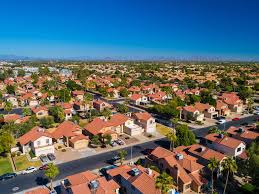
Photo Credit: AZ Central
Phoenix recently approved a controversial “middle housing” ordinance that will reshape how its historic neighborhoods develop. The decision, made under pressure from state law, allows duplexes, triplexes, and fourplexes in areas previously zoned exclusively for single-family homes, including beloved historic districts like Willo, Encanto-Palmcroft, and Los Olivos.
The resistance was fierce. Neighborhood advocates warned of bulldozed century-old homes, decimated historic character, and communities fundamentally transformed beyond recognition. One resident predicted flatly that within a year, the landscape would be completely different and historic districts would be decimated.
But here’s the uncomfortable reality those concerns overlook: Arizona faces a severe housing affordability crisis, and Phoenix sits at its epicenter.
According to recent data, the typical home price in Arizona reached over $427,000 by March 2024, with median rent at $1,600. For minimum-wage workers, affordable rent would be $745 per month, just over half the cost of a one-bedroom apartment in Arizona’s current rental market. That means people with low incomes would need to work 76 hours a week to afford a one-bedroom apartment.
The choice Phoenix faced was stark: craft local rules to manage middle housing development, or let state law take effect automatically on January 1, potentially losing all local control over where and how multi-family structures are built. City officials chose pragmatism.
The fundamental question isn’t whether we value historic neighborhoods; it’s whether we value them more than we value housing accessibility for the next generation. When century-old homes become exclusive luxuries affordable only to the wealthy, have we truly preserved the community fabric, or just created attractive museums for the privileged?
Government’s role isn’t to lock neighborhoods in amber while housing costs spiral beyond reach. It’s to balance competing values with pragmatism; preserving what we can while ensuring communities remain accessible and economically diverse.
Phoenix made the practical choice: managing middle housing development locally rather than ceding control entirely. In a housing market where only 39% of Arizona employees at median wages can afford a one-bedroom apartment, that pragmatism isn’t just prudent policy…it’s a moral imperative.
Historic preservation matters. Housing affordability matters more. Finding solutions that address both, even imperfectly, is what responsible governance looks like.
Former Scottsdale City Councilman and Chairman of Taxpayers Against Awful Apartment Zoning Exemptions (TAAAZE)
The fight against Axon’s assault on democracy and profoundly frustrated Scottsdale residents isn’t going away despite a recent 4 to 3 Scottsdale City Council approval of the second largest multifamily housing project (1,200 units) in state history as well as undermining efforts to challenge the controversial rezoning in court and with the scheduled city-wide vote in November 2026.
I’m Chairman of TAAAZE (Taxpayers Against Awful Apartment Zoning Exemptions) which collected nearly 30 thousand signatures last fall to challenge Axon’s apartments. 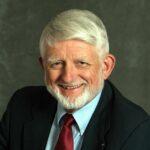
We are still pursuing a lawsuit against Senate Bill 1543, the “Axon Bill,” which put certain rezoning decisions beyond the reach of voter challenges, including last year’s lame duck Scottsdale City Council approval of 1,900 units near Hayden and the 101. The first hearing on the state law is set for late January. Scottsdale’s approval is based on the state law. If found unconstitutional, Scottsdale’s Axon approval is meaningless and there will be no apartments to subsidize their controversial development plans.
Scottsdale City Council Members Adam Kwasman, Mary Ann McAllen, Solange Whitehead, and Mayor Lisa Borowsky voted yes on a memorandum of understanding (MOU) with Axon that approved the unnecessary and unneeded 1,200 multifamily units. The city also agreed to abandon litigation against SB1543 and rescinded the previous zoning decision on Axon. The capitulation to Axon is shocking.
Additionally, at a time of drought the council majority released Axon of its obligation to provide water for its project. Who thinks this is a good idea?! And for the first time in Scottsdale history, the developer will govern itself when it comes to construction, rather than answer to City inspectors.
The council majority claims Axon will build 600 apartments and 600 condominiums yet included no language in the MOU or secured Axon agreement otherwise, meaning without such language and agreement, the mega Borowsky led approval is for 1,200 apartments.
Council Members Barry Graham, Jan Dubauskas, and Kathy Littlefield voted against the Axon apartment scheme. We thank them.
TAAAZE is committed to the lawsuit against SB 1543 and is exploring additional lawsuits to prevent Axon from building 1,200 multifamily units in an area already dealing with massive traffic problems. About 10,000 apartments are under construction or approved within five miles of this site.Read More
By Alexander Lomax
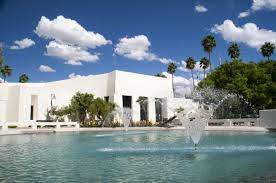
Former Scottsdale City Councilmember Tammy Caputi recently raised concerns about proposed changes to the city’s Rules of Council Procedure, scheduled for consideration on December 2. Her message has sparked an important conversation about what it means to truly engage with residents, even when that engagement is messy, time-consuming, or uncomfortable.
The proposed amendments would restructure public participation at council meetings, including consolidating two public comment periods into one, moving comments to the end of meetings, reducing speaking time from three to two minutes, restricting audiovisual equipment use, and requiring two weeks’ advance notice for citizen petitions. City staff has framed these changes as improvements to transparency and efficiency.
But here’s the thing about democracy: it’s supposed to be a little inefficient. It’s supposed to take time. It’s supposed to accommodate the unpredictable rhythms of civic life, not just the orderly progression of agenda items.
The real measure of “resident-friendly” government isn’t how smoothly meetings run or how quickly agendas move. It’s whether ordinary people with jobs, families, and limited time can still make their voices heard on issues that matter to them. It’s whether the process bends toward inclusion or convenience.
Transparency and public participation are most meaningful when they’re most accessible. That means accommodating the unpredictable, the unpolished, and the urgent. It means recognizing that sometimes the most important feedback comes without two weeks’ notice, and that visual presentations can communicate what words alone cannot.
Former Councilmember Caputi’s message serves as an important reminder: the goal should always be more engagement, not less. Better engagement, certainly, but never at the cost of accessible engagement. Local government works best when it actively invites participation, even when that participation is imperfect, inconvenient, or critical of the council itself.
The strength of Scottsdale’s civic culture will be measured not by how efficiently it can move through agendas, but by how authentically it can engage with the full spectrum of community voices—especially those that challenge, question, or simply show up unprepared but passionate about their city.
That’s democracy in action, and it’s worth protecting, even when it’s imperfect.
By Ronald Sampson

Photo Credit: Arizona PBS
Scottsdale Mayor Lisa Borowsky is facing a sudden and unusually sharp backlash after sources say she was booed at a meeting of the Palo Verde Republican Women; a group that once represented a reliable pocket of support. The reaction followed her vote in favor of a “compromise” agreement with Axon, clearing the way for a sprawling apartment development. For a mayor who campaigned on balanced growth and defending Scottsdale’s unique character, the blowback is more than just symbolic; it’s a warning shot.
And unlike some might hope, Scottsdale’s history suggests these early warning shots often echo for a long time.
When former Mayor David Ortega stumbled early in his term, particularly over development decisions that alienated activists and Republican clubs, the damage lingered. His relationship with grassroots organizations never fully recovered. Mary Manross, despite her professionalism and moderate tone, struggled for years to rebuild support after a general sense of waywardness; those struggles contributed to her eventual defeat. Even Sam Campana faced persistent criticism over development-related controversies that dogged her throughout her tenure and weakened her politically.
In Scottsdale, early missteps don’t always fade. They often define.
Borowsky now risks entering that same pattern. The Axon vote wasn’t just another zoning item; to many residents, it symbolized the broader, long-standing tension between preserving Scottsdale’s suburban identity and accommodating big corporate actors. And for some on the right, any suggestion of compromise, particularly with a powerful company, feels like capitulation rather than leadership.
The reaction from the Palo Verde Republican Women matters precisely because it comes from inside her own coalition. Moments like these can calcify quickly, especially if they feed into preexisting suspicions about a leader’s priorities.
To recover, Borowsky would need more than a few clarifications or town halls. She would need to demonstrate, consistently and strategically, that she is still aligned with the voters who put her into office. And even then, as Scottsdale’s recent mayoral history makes clear, rebuilding trust once lost is far from guaranteed.
The boos may have lasted only a moment. But the political consequences could linger much longer.
By ScottsdaleVoter

Photo Credit: Arizona PBS
- waive Axon’s previously assured water supply commitments (in the middle of a 25-year drought),
- grant Axon unprecedented VIP treatment to self-certify their buildings, a privilege never before granted in Scottsdale, and
- permanently void the voter referendum you worked so hard to earn.
Yes, the same mayor who claims to respect the will of the voters just erased your referendum with a single vote, teaming up with Solange Whitehead, who has now sided with Axon and against Scottsdale residents at least seven separate times.

Photo Credit: Fox 10
In a city where everything is photographed for Instagram, from your pink pasta to your overpriced mimosas, two alleged lovebirds forgot one crucial Scottsdale survival rule: assume you’re always on camera.
Last month, Corrisa K. Sucanick, 30, and Brian H. Morrow, 39, were arrested for what can only be described as the most romantically misguided burglary in Old Town history. The dynamic duo allegedly decided that Mon Cheri, that rose-covered, Instagram-worthy restaurant where bachelorette parties go to die happy, would make the perfect setting for their crime spree. And by crime spree, we mean stealing cash, liquor, and apparently, a moment.
According to Scottsdale PD, the pair broke into the restaurant near Indian School Road and Goldwater Boulevard in the early hours of Oct. 25, helping themselves to approximately $450 from the cash register, an iPhone, and a bottle of Bacardi rum. But here’s where things get… interesting. They also allegedly had sex inside a rose display designed for guests to take Instagram photos.
Yes, you read that correctly. The very same photo backdrop where countless bridal parties have posed with champagne flutes became the scene of what police delicately termed “alleged amorous activities.”
The restaurant’s owner, Lexi Caliskan, put it best when she told reporters, “They got caught in the moment, there’s roses everywhere, maybe it was kind of romantic but modern-day Bonnie and Clyde.” She also noted, with what we can only assume was exasperation, “Help.. they violated our roses.”
Now, here’s the thing about Mon Cheri: it’s decked out with roses and chandeliers, designed specifically to be an Instagrammable spot for girls’ brunches and celebrations. The entire establishment is basically a surveillance-friendly wonderland, complete with a ring-light adorned photo booth in the main inside dining area featuring a heart-shaped faux rose wall.
So naturally, the restaurant’s security cameras captured everything. And unlike most Old Town establishments where blurry footage leads nowhere, the suspects didn’t use facial coverings to conceal their identity. Because when you’re swept up in romance among the roses, who thinks about mundane details like surveillance technology?
Thanks to that crystal-clear footage and tips from the community (read: people who recognized them), Sucanick was arrested Nov. 3 in Scottsdale and Morrow was arrested the next day at a Motel 6 in Phoenix. Because of course the romantic getaway ended at a Motel 6.
Both face burglary charges, with Morrow also charged with possession of burglary tools. As for their passionate interlude? Police said that element did not meet the criteria for criminal prosecution. Small mercies.
The moral of this very Scottsdale story? If you’re going to commit crimes in Old Town, maybe pick a location that isn’t specifically designed for maximum photo documentation. And if you simply must get frisky during your felony, perhaps choose a venue that doesn’t literally market itself as an Instagram photo oasis.
After all, in Scottsdale, if it’s not documented on camera, did it even happen? Unfortunately for our amorous alleged burglars, it happened. And so did the arrests.

Robert Swagger. Photo Credit: KTAR
If you’re a regular reader of the Arizona Progress & Gazette, you’ve seen this story before. Scottsdale, with its affluent and aging population, has become notorious as both a haven for fraudsters and a prime hunting ground for scams. This week’s case is just the latest chapter in an unfortunately familiar narrative.
Robert Swagger, a Scottsdale man, has been ordered to pay $202,000 in restitution after admitting to securities fraud in a scheme that specifically targeted Christian investors. The setup was calculated and cynical. In 2019, Swagger approached members of the Young Presidents Organization Christian Fellowship Network, a group of Christian company presidents under age 45, with what appeared to be a faith-aligned investment opportunity in a streaming company featuring family-friendly content.
Swagger founded TRS PureFlix, LLC to manage these pooled investments, soliciting a minimum of $50,000 per investor through the YPOCFN message board. Between May and June 2019, he secured $202,000 from three investors. But here’s where the scheme unraveled: over $201,000 of that money was funneled to Swagger’s second company, TRS Companies, LLC, for “management fees” that should have totaled only $2,020. The funds were used to pay personal expenses, legal fees, credit cards, and membership dues; none of it went toward purchasing the promised promissory note.
Perhaps most damning? Swagger failed to disclose to investors that his securities license had been suspended in 2011 following accusations by a former employer that he hadn’t repaid a promissory note. A securities fraudster with a history of not repaying notes was selling promissory notes. The irony is almost poetic.
This case fits seamlessly into Scottsdale’s broader fraud problem. From cryptocurrency scams that have stolen $5 million from residents to massive Medicare fraud schemes, the city has become a magnet for financial crimes. The common thread? Wealthy, trusting residents make attractive targets.
So how do you protect yourself? Start with healthy skepticism. If someone approaches you with investment opportunities through affinity groups, whether religious, social, or professional, verify their credentials independently. Check securities licenses through FINRA’s BrokerCheck. Never invest based solely on shared values or group membership; fraudsters weaponize trust.
Ask hard questions about fees, and demand transparency about where your money actually goes. If management fees seem disproportionate to the investment amount, walk away. And perhaps most importantly, remember that faith-based or values-aligned investments aren’t immune to fraud; in fact, they’re often specifically targeted because of the built-in trust factor.
Swagger has pleaded guilty to federal wire fraud charges and faces sentencing in February 2026. But for Scottsdale investors, the lesson is clear: in a city where fraud has become disturbingly routine, due diligence isn’t optional…it’s essential.
(Scottsdale, Ariz.) The fight against Axon’s assault on democracy and frustrated Scottsdale residents isn’t going away despite a recent 4 to 3 Scottsdale City Council decision to approve the second largest multifamily housing project (1,200 units) in city history as well as undermining efforts to challenge the controversial rezoning in court and with the scheduled city-wide vote in November 2026!
TAAAZE (Taxpayers Against Awful Apartment Zoning Exemptions) which collected nearly 30 thousand signatures last fall to challenge Axon’s apartments, is still pursuing a lawsuit against SB1543 also known as the “Axon Bill” which put certain rezoning decisions beyond the reach of voter challenges, including last year’s lame duck Scottsdale City Council vote to approve 1,900 units near Hayden and the 101. The first hearing on the state law is set for late January. Scottsdale’s approval is based on the state law. If it is found unconstitutional, Scottsdale’s Axon approval is meaningless.
This year Scottsdale City Council Members Adam Kwasman, Mary Ann McAllen, Solange Whitehead, and Mayor Lisa Borowsky voted yes on a memorandum of understanding (MOU) with Axon that approved 1,200 multifamily units. The city also agreed to abandon litigation against SB1543 as well as rescinding the previous zoning decision on Axon. And at a time of drought the council majority actually released Axon of its obligation to provide water for its project.
They claim Axon will build 600 apartments and 600 condominiums yet included no language in the MOU or secured Axon agreement otherwise, meaning without such language and agreement the mega Borowsky led approval is for 1,200 apartments.
Council Members Barry Graham, Jan Dubauskas, and Kathy Littlefield voted against the Axon apartment scheme.
TAAAZE has no plans to abandon the lawsuit against SB 1543 and is exploring other legal options to prevent Axon from building 1,200 multifamily units in Scottsdale, an area already dealing with massive traffic problems.
TAAAZE Chairman and former Scottsdale City Councilman Bob Littlefield said, “Axon can’t be trusted. But they can be challenged in court and at the ballot box despite any sweetheart deals they made with some members of the Scottsdale City Council or the Arizona Legislature. Let me make this clear, TAAAZE is unfazed. Our fight continues. Because if this is allowed to happen in one neighborhood, then no neighborhood in Arizona is safe from bad actors like Axon. They took away Scottsdale’s constitutional rights and rather than defend them with a council majority, actually submitted itself to the corporation that did so.”
By Supervisor Thomas Galvin
Hello Neighbors, As we gather with loved ones this Thanksgiving, I’m reminded of how fortunate we are to live in a such a safe and thriving community. We own a special debt of gratitude to our veterans, sheriff’s deputies, and all our first responders who bravely serve and protect us. May this season bring peace, joy, and renewed appreciation for all we’ve accomplished together.
Judge Rules in Favor of Board of Supervisors in Elections Lawsuit!
A Maricopa County Superior Court judge recently rejected Recorder Justin Heap’s request to halt the Board of Supervisors audit of the county’s voter registration system and election technology. Election integrity is important to me. As Chairman, I promised in January that we would undertake a thorough, comprehensive review of our elections procedures, processes, and IT systems. I’m committed to transparency and am glad, but not surprised, we won this frivolous filing in the courts. You can click the picture below to read the full story from AZCentral. Read more from 12News, KJZZ, Phoenix New Times, and VoteBeat.
D2 Highlights
My Joint Statement with Vice Chair Brophy McGee on Melendres Filing
Since joining the Board of Supervisors, I have remained committed to protecting Maricopa County taxpayers. I have repeatedly raised concerns about the lengthy and costly federal oversight of the Sheriff’s office. In a court filing on Friday, November 22, we outlined how the County’s budgeting policies are not subject to federal jurisdiction. Instead, our budgeting policies are accountable to YOU, the County taxpayers.
Read the Full Statement
Thanking Our Emergency Management Heroes!
When I think of what I am grateful for this year, I find myself especially thankful for the great men and women of our Maricopa County Emergency Management Department. This team has gone above and beyond during the significant storms our region faced this fall.
Please click the picture below to enjoy a video highlighting the work of this exceptional team!
Honoring Our Veterans
I was honored to present our two highly decorated speakers for this year’s Maricopa County Veteran’s Day Ceremony. Detective Robert Lopez had a distinguished military service career before joining the Tempe Police Department. Lt. Ryan Neville called the military a family business before joining the Sheriff’s Office. I thank both these gentlemen, and all our veterans, for their selfless and courageous service.
Commemorating the New Southeast Juvenile Building Grand Opening
It was an honor to celebrate the opening of the much-improved Maricopa County Southeast Juvenile Justice Facility. The renovation and enhancements of the more than 235,000 square foot facility came in $600,000 under budget! Congratulations to Presiding Judge Pamela Gates and Juvenile Presiding Judge Lori Bustamante. The Board of Supervisors is proud to approve the funding for this worthy project!
Speaking at the Arizona Chamber Board Meeting
This month, I spoke at the Arizona Chamber of Commerce’s Board Meeting. I was proud to let these local leaders know that Maricopa County is being run like the efficient and successful business it is!
Arcadia Osborn Neighborhood Association Fall Festival
It was wonderful meeting so many of you at the Arcadia Osborn Neighborhood Association Fall Festival! The event was full of great food, fun activities, and valuable resources for our community to explore.
D2 is Open for Business!

This month, Michele from our District 2 office attended the grand opening of Creative Hands Cuisine in Fountain Hills!

Santa has come to town in Scottsdale! This month, Taylor from our District 2 office joined a recent Scottsdale Chamber event where Santa himself cut the ribbon on the start of his season as the official “Scottsdale Santa.”

Congratulations to Mesa’s T.C. Eggington’s Brunchery for celebrating 40 years in business! Michele and Taylor from our office attended the celebration!
In the News
November Pup-date with Paw-litics!
Meet Butterfly! This energetic pup was my latest co-host on Paw-litics, my ongoing video series designed to keep you up to date with what’s going on at the County, while showing off one of the adoptable dogs in our County shelters. Click the picture below to watch the latest video!
My First Time on the Upfront Planning Podcast!
It was great to join the Upfront Planning Podcast to discuss business development, affordable housing, and so much more. Thank you to host, Jessica Sarkissian for having me!
¡Gracias por invitarme, Univision!
Thank you for having me, Univision! I had a wonderful time joining host, Heidi Renpenning, for Al Punto to discuss the latest news at Maricopa County.
Things to do in District 2!
“Lights of Love” Returns to the East Valley!
If you’re looking for some holiday cheer this Christmas Season, Sunshine Acres in Mesa is hosting a drive-thru Christmas Lights display. This free, festive lights display is fun for the whole family!
Nonprofit Spotlight
United Food Bank
For more than 40 years, United Food Bank has been a beacon of hope for those experiencing hunger in Arizona. United Food Bank covers a service area of nearly 20,000 square miles, including some of the most remote parts of our state. This Mesa-based food bank is a lifeline for those working to make ends meet and keep their families fed.
United Food Bank
What to Chew in District 2
Local Favorite: Greek Café Mix
Cafe Mix is a family-friendly, locally owned Greek restaurant in Apache Junction. Check out a varies of favorites including gyros, salads, kabobs, baba ghanoush, and spanakopita. Enjoy the family-friendly atmosphere and fun twists on classic flavors at this AJ favorite!
Greek Café Mix
What to Chew in District 2 Form District 2 is on a mission to spotlight the district’s tastiest food. Whether you’re a new restaurant, a food truck, or a local staple that’s been around forever, please fill out the below form so we can follow up with you about potentially showcasing your story in our newsletter.
By Brian C. Anderson, reposted from City Journal

Three decades ago, the visionary social thinker Peter Huber published Orwell’s Revenge, a book that turned one of the twentieth century’s most haunting political parables on its head. Where George Orwell imagined a future of total information control, Huber saw the opposite: a world where digital technology shattered centralized authority. In 1984, the Ministry of Truth could rewrite history because it monopolized the tools of communication. But in the digital age, Huber argued, the networked computer would scatter those tools across society, producing an unruly democracy of voices. The Internet, he predicted, would not empower “Big Brother” but millions of “little brothers”—individuals able to report and argue and publish. What once seemed a one-way flow of information from elite institutions to a passive public was becoming a many-to-many conversation. The gatekeepers were being evicted by the code.
This technological revolution would have profound cultural consequences. As Huber memorably put it, “Better communicating machines produce more—not less—communication, more—not less—free expression, more—not less—political involvement, more—not less—freedom of thought.” The people who controlled legacy newsrooms—highly educated and overwhelmingly left-leaning—had long exercised a disproportionate power to define what counted as respectable opinion. When those gatekeepers lost influence, new kinds of voices surged through. In a book published in 2005, I described the early energies of this revolt, chronicling how talk radio, cable news, and the early Internet—all unleashed by the mutations in communications technology—disrupted liberal cultural authority. Right-of-center ideas and perspectives suddenly found much wider distribution.
Read the full piece here

Photo Credit: Trip Advisor
So, big news if you’re a Saturday market regular: the Old Town Scottsdale Farmers Market is packing up and heading to the city hall parking lot when the 2026-27 season kicks off. After more than a decade at the First Street and Brown Avenue parking garage, change is coming, and honestly, people have feelings about it.
Let’s start with the good news, because there is some. The city is expanding the current parking structure, which is why the market has to move in the first place. More parking in Old Town isn’t exactly a bad thing, right? And the market isn’t disappearing; it’s just relocating. City Manager Greg Caton promises it’ll stay close to Old Town’s heart while giving vendors and visitors the space they need.
Plus, the new location at city hall means better infrastructure support. We’re talking about organized vendor parking, improved wayfinding, and facilities designed to accommodate what’s become one of Scottsdale’s most beloved Saturday traditions.
Now for the reality check. If you’ve been going to this market for years, you know location matters…a lot. Some longtime customers have already raised concerns about whether the city hall spot will have the same foot traffic and Old Town charm. One vendor put it bluntly during city council discussions: his customers don’t want to trek to a city hall parking lot.
There’s also the question of what this means for Old Town retail. When you move a major weekend attraction that brings hundreds of people into the area, you’re potentially shifting foot traffic patterns that local businesses have relied on for over a decade. And let’s be real: a city hall parking lot doesn’t have quite the same vibe as the heart of Old Town.
The bottom line? The market is staying in Scottsdale, which is what matters most. But this move represents a shift in how we experience one of our community’s favorite weekend traditions, and it’s fair to have mixed feelings about that.
The Council is amending the Rules of Procedure on December 2. The justification is to “improve transparency, civility, decorum and public participation.” The changes are “intended to make our meetings more efficient, civil, and legally sound.”
REALLY?
Here are the proposed changes:
- Reduce public comment periods from two to one.
- Move public comments from the beginning of the meeting to the end.
- Reduce speaker time from three minutes to two minutes.
- Forbid the use of city audio visual equipment to play recordings.
- Require two weeks advance notice to consider citizen petitions.
How on earth does this “improve public participation”? Under these new rules, this very topic would be outside the scope of a citizen petition since it was snuck in just before the Thanksgiving holiday weekend.
So much for the “resident-friendly” council.

The Killers
The WM Phoenix Open has weathered its share of storms this year, but the tournament’s ability to pull off major entertainment coups proves it remains one of golf’s most formidable events.
Yes, the Scottsdale spectacle has faced legitimate criticism. From concerns about overcrowding and unruly fan behavior to questions about whether the party atmosphere overshadows the actual golf, the WM Open has given its detractors plenty of ammunition. The tournament has long walked a tightrope between raucous entertainment and professional sport, and that balance hasn’t always held steady.
But here’s the thing about juggernauts: they keep rolling forward.
Case in point? The Killers will be performing at the legendary Bird’s Nest, the nightly party venue that has become as much a part of the WM Open’s identity as the stadium atmosphere at the 16th hole. Landing a band of The Killers’ caliber isn’t just impressive…it’s a statement. We’re talking about one of the biggest rock acts of the past two decades, a band that headlines major festivals and sells out arenas worldwide. Their setlist alone could power an entire music festival.
The Bird’s Nest has hosted impressive lineups before, but The Killers represent something different. This isn’t just getting a popular band; it’s securing legitimate headliner talent that transcends the golf world and positions the WM Open as a premier entertainment destination, not just a sporting event. When fans can watch world-class golf during the day and then catch “Mr. Brightside” and “Somebody Told Me” at night, the value proposition becomes undeniable.
Critics may grumble about the tournament’s focus on spectacle, but the WM Open has found a formula that works spectacularly well. It consistently draws massive crowds, generates enormous charitable donations, and now offers entertainment that rivals standalone music festivals.
The controversies won’t disappear, and the tournament should continue addressing legitimate concerns. But with moves like bringing in The Killers, the WM Open proves it’s not just surviving its challenges—it’s thriving despite them, remaining an unstoppable force in professional golf.
By Alexander Lomax

Photo Credit: Arizona PBS
Facing an onslaught of negativity for crafting a capitulation rather than a compromise with Axon over its massive apartment plan on Monday night, Mayor Lisa Borowsky sent out the press release below.
After getting booed yesterday at the Palo Verde Republican Women’s meeting I get the attempt at spin.
Unfortunately, our reliable sources are able to debunk much of the Mayor’s diatribe.
Lie #1: She stated a California union funded the referendum drive. Simply not true. One need only look at publicly available campaign finance reports which show the union in question contributing about 6% of the signatures and funds. The Mayor knows yet continues to perpetuate a falsehood.
Lie #2: She engineered a settlement with “600 apartments and 600 condominiums.” Yet, the Mayor failed to include any language – and continues to refuse to do so – that would ensure condominiums. Her deal effectively allows 1,200 apartments.
Lie #3: Basically everything else in the press release, according to sources.
Notably, the Mayor failed to note new special favors exempting Axon from water pledges previously agreed to even though Scottsdale is facing severe problems because of drought and its reliance on Colorado River water or that, for the first time in city history, is allowing a developer (Axon) to police itself during construction. She also, for the first time in history, unilaterally eliminated the constitutional voting rights of citizens.
The Mayor could have ended this issue with a smart, reasonable compromise. She failed, miserably. Fix the problems Mayor rather than channel Pinocchio. You actually have the ability to do so.
Meanwhile the issue remains very much alive because the state law underpinning the Scottsdale scheme remains the subject of compelling litigation, with more litigation on other fronts coming, sources also confirm.
Her press release:
The Taxpayers Against Awful Apartment Zoning Exemptions (“TAAAZE”) committee, led by former Councilman Bob Littlefield, ran the out-of-state, union-funded Axon referendum. Of the about 27,000 signatures gathered, a total of 25,000 Scottsdale voter signatures were paid for by a California labor union.
Just as our U.S. Constitution guarantees a defendant the right to a speedy trial, in this instance, Axon was told by a majority of my council colleagues, their trial by election would be delayed two years, set in November 2026.
Axon appealed the delay to the Arizona Legislature, which resulted in Senate Bill 1543 (“the Axon bill”) being passed and signed by the Governor. Axon “won” an exception to local zoning control, which effectively made our votes in the referendum election moot.
However, the Axon bill had defects that make it susceptible to constitutional legal challenges. If the election was held before the legislature fixed those issues, it would have made SB 1543 meaningless. Instead, the legislature had plenty of time to override our right to have a meaningful vote.
In July, I asked the City Council to hold the referendum election at the next available date, which would have been November 2025. Councilmembers Dubauskas, Graham and Littlefield refused, and they were successful in blocking a timely election set earlier this month — at de minimis cost to the city.
Again, in October, I asked the City Council to hold an election at the next available date, which would have been March 2026. Again, those same Councilmembers refused to listen to reason and said, “no.”
Mr. Littefield has been quoted as saying, “I always said we need to let people vote on the issue,” which is a curious comment from Bob because his political allies on City Council repeatedly denied my requests to hold an early election. What is even more curious is Bob telling a colleague the reason for delaying the election until November 2026 was to get himself and Councilman Graham re-elected.
Accordingly, we were left with only two choices:
- File a lawsuit against the flawed Axon legislation, only to have Axon go back to the legislature to fix SB1543, neutering TAAAZE’s and the City’s legal claims and further nullifying the referendum election, leaving Axon free to build 2,000 apartments or more; or
- Strike a compromise to reduce the number of units and project density.
I promised the voters to oppose high-density apartments. In keeping with my promise, I negotiated a major reduction of density, down from 2,000 apartments to 600 apartments and 600 condominiums. Importantly, TAAAZE representatives agreed to resolve the entire dispute if Axon agreed to build 500 apartments and 1,000 condos. In the end, my negotiations with Axon resulted in a much lower overall density than TAAAZE’s last demand.
Isn’t it time to end the political gamesmanship and jockeying?
Delaying the election cost us our right to vote on the Axon project and resulted in the city being stuck with SB 1543. If we are faced with another referendum, let’s have the election right away and not make the voters wait and risk more legislative interference.
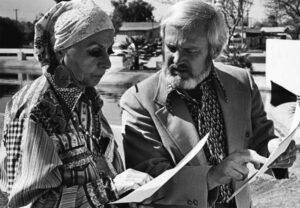
Photo Credit: Scottsdale Progress
This past week brought with it unfortunate news for the city of Scottsdale; that it has lost one of its greatest champions. Bill Walton, the landscape architect and former city councilman whose vision transformed a flood-prone marsh into one of America’s most celebrated urban greenbelts, passed away on November 3 at the age of 95.
Walton arrived in Scottsdale in 1963, fresh from Iowa State University, ready to apply his landscape architecture training to the growing desert community. What he found was a city divided by “The Slough”: a brush-choked gash that regularly flooded, threatening homes and businesses. Where others saw an engineering problem requiring concrete channels, Walton saw possibility.
It began with a letter to the editor, a simple inquiry about creating something comparable to New York’s Central Park. That night, two city council members knocked on his door at 10 p.m., asking if he’d chair a committee to explore the idea. It may have been Scottsdale’s most consequential cold call.
What followed was decades of persistence. Walton faced skepticism from the U.S. Army Corps of Engineers, multiple failed bond proposals, and agencies that deemed his greenbelt concept too expensive. But after a devastating 1972 flood changed public opinion, voters approved funding by a 7-1 margin. When Silverado Golf Course opened in 1999, the Indian Bend Wash Greenbelt was complete; providing over 63,000 residents within walking distance access to parks, golf courses, lakes, and paths.
The project earned recognition as one of the nation’s top engineering feats and was featured in international exhibitions. But Walton’s legacy extended far beyond the greenbelt. He helped develop TPC Scottsdale and bring the Phoenix Open to the city, negotiated with the PGA and federal government to create attractions generating millions in tax revenue, and worked to revitalize the McDowell corridor.
Jim Bruner, who served alongside Walton on the council despite their opposing political philosophies, captured his colleague’s essence perfectly: “Bill was a visionary, a wonderful person, and an excellent council member. Despite being on opposite sides of the political spectrum, we collaborated effectively. I had immense respect for him and valued all his contributions to our city.”
Mayor Herb Drinkwater called Walton “an institution” at his 1992 retirement party, recognizing nearly three decades of community service. Attorney Randy Nussbaum later observed that Walton was “one of the reasons Scottsdale is envied by Southwest cities.”
Bill Walton’s Scottsdale is the one we enjoy today: a city where nature and urban development coexist, where flooding gave way to recreation, and where one person’s vision became a community’s treasure. His legacy flows through every path along the greenbelt, every round of golf at TPC, and every resident who calls this remarkable desert city home.
By Councilwoman Jan Dubauskas

You elect us to make tough votes. You elect us to protect Scottsdale and keep Scottsdale special. You elect us to fight for your constitutional rights.
You did not elect us to make excuses or to bow to corporate interests.
Over the past year, you have sent us thousands of emails, asking, begging, pleading with Council to side with the residents. You asked us to protect your city and your voice.
On Monday, Councilman Graham, Councilwoman Littlefield and I stood firmly together. We put you first and fought for your constitutional right of referendum to vote on the Axon project.
Unfortunately, Borowsky, Whitehead, Kwasman, and McAllen voted against you and in favor of a deal with Axon. Read here.
Here’s the Borowsky, Whitehead, Kwasman, McAllen deal:
1) 1,200 housing units. While the contract says 600 apartments and 600 condos, without a voluntary deed restriction from Axon, that split is not legally enforceable by the city. Axon can build 1,200 apartments.
2) No citizen referendum. Nearly 27,000 concerned residents signed a petition to put the Axon project on the ballot and it was certified by the city. The resident referendum is canceled.
3) No lawsuit. The city of Scottsdale will not sue the state of Arizona over the Axon bill SB1543. The city of Scottsdale will not defend your constitutional right to referendum.
4) Self-Certification. Axon will be the first company in the history of the city of Scottsdale to self-certify that its building meets city code.
5) No Water. Axon will provide no additional water to cover its use.
Councilwoman Littlefield, Councilman Graham and I voted to defend Scottsdale and protect your right to vote on this important project.
Yet, I am a big fan of Axon’s products, it’s upgraded headquarters, and the project’s boutique hotel. However, 1,200 units are just too many. Our job is to represent YOU. I promised to always remember you – and to put you first.

By Alexander Lomax
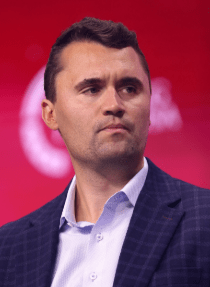
I apparently couldn’t go more than a week without some reactionary bullocks regarding Scottsdale and Charlie Kirk came across my screen. Literally just last week I wrote this piece where I questioned why Scottsdale officials were considering a memorial for Charlie Kirk. And just like Isaac Newton said, with every action comes an equal and opposite reaction.
Unfortunately that equal but opposite reaction manifested itself in the strangest of ways: hundreds of people signed a petition to attempt to eliminate Turning Point USA clubs in the Scottsdale Unified School District (Turning Point USA was the organization that Kirk founded). Yes, let’s fight the things we don’t like by trying to ban them as we unironically rail against conservative politicians attempting to ban some books.
The petition talks about the organization as one that “promote(s) hate, division, or discrimination under the guise of ‘religious’ or ‘political’ values.” And yet again, the political left loses the plot completely.
And let me be clear…Charlie Kirk said some fairly disagreeable stuff. That was his job as a provocateur. He debated, he provoked a response. And in the modern age where everything is somewhere on the internet, 100% of the people who are in the political influencing industry have said some gross things. Right or left, all you need to do is ask ChatGPT for the worst things they’ve ever said. This is in the same time period where one of the most popular progressive influencers, Hasan Piker, is accused of shocking his dog on camera.
These people are not heroes. And this goes for everyone in the comments who deifies Kirk and talks about what a godly man he was. You didn’t know him. You didn’t know his heart. In reality he probably wasn’t a good person because EXTREMELY few people whose careers are in political influencing are truly good people. It’s the wrong line of work for the good.
But that’s not the point. This is another example of a disturbing tendency from those on the left over the last decade plus: if they don’t like something they would rather silence it. They don’t want to offer a better argument. They will liken any effort to have a free exchange of ideas with a conservative as “platforming” “dangerous ideas”. The same brain trust that wouldn’t let Kamala Harris go on the Joe Rogan podcast because she would be “platforming right-wingers” and instead put her in front of a friendly progressive audience would simply prefer that the other side didn’t exist.
While I may lean more to the left than the right nationally, I’ve never known a conservative that wouldn’t talk to a liberal because of their beliefs. But I have known many on the left who cut conservatives out of their lives because they liked Trump.
The political left needs to grow the hell up. Develop a better argument instead of trying to silence everyone. Voters have made it clear that they’re not buying your attempts to shut everyone up. If you don’t like free speech, perhaps North Korea or Russia are more to your liking.
2024 Scrum
and Carla, Preserve Pioneer and Campaign Coordinator for Vote YES YES Scottsdale PAC
In most campaigns there are winners and losers. Not when it comes to the passage of Propositions 490 and 491 in Scottsdale which happened on November 5th. We believe everyone in Scottsdale wins.
Proposition 490 will help revitalize and maintain Scottsdale’s parks, beginning with the Indian Bend Wash Greenbelt, and will provide ongoing care and protection for the McDowell Sonoran Preserve. It will provide funding to prevent and fight fires in and around the Preserve, and funds for increased police rangers for the parks and the Preserve.
Almost sixty years ago Scottsdale had the wisdom and foresight to create the Greenbelt and, thirty years ago, to create the McDowell Sonoran Preserve. They are two of Scottsdale’s greatest decisions and treasures. That wisdom and foresight are still with us today as evidenced by this vote.
Proposition 490 contains legal safeguards to ensure the money is properly spent. And we think these safeguards, and the benefits of the measure will win over many who voted no and maybe even some critics. Now that the voters of Scottsdale have spoken overwhelmingly in support of Proposition 490, we look forward to working with the new Mayor and Council to see that it is implemented properly and responsibly.Read More
This year Scottsdale was fortunate when it came to wildfires. Next year we might not be so lucky.
As every summer gets hotter and drier, nature and human caused fires are a fact of life in Scottsdale and our Preserve. Thanks to the quick response and hard work of our Firefighters – plus a little luck with wind direction – we have avoided a catastrophic fire this year.
But next year, unless Propositions 490 & 491 pass, we won’t have as many tools to help prevent fires.
Year round our Fire Department does excellent outreach work with developments in Northern Scottsdale to address not planting invasive species and removing fire loads. They also work with the Arizona Department of Forestry and Fire Management to get grants which provide for wildfire prevention. Specifically invasive plant removal and preventative measures along our Preserve boundary and major roadways.
But Scottsdale did NOT get a grant to fund this work in 2025!
Proposition 490 would add Fire Department funding to provide quicker response times; increased Fire prevention programs; a second Technical Rescue Team; and additional resources to better protect you and your neighborhoods.
Proposition 491 – which is not a tax increase or budget override – would allow Scottsdale to spend the money it already collects on programs and services that residents want and need. Without its passage, city services will face cutbacks, including in public safety.
Please join the Firefighters, who dedicate their lives to protecting you, in voting YES-YES on Props 490 and 491. It’s critical to Scottsdale’s safety and future quality of life.
Carla (Carla), Preserve Pioneer
For President, the Democratic candidate Vice President Kamala Harris trails Republican former President Donald Trump by a slim 46.0% to 46.2% margin. 7.7% reported as being undecided or refused the question.

Speaking with AZ Free News about the Presidential race, George Khalaf, President of Data Orbital, stated “That 7.7% undecided number, I would say, is going to be one of two things: 1.) Either individuals that are saying that they are likely to vote but don’t end up voting or 2.) People that really are truly undecided. But I would be shocked if the true undecided number is in the high single digits”. Khalaf goes on to explain, “I would guess that right now, the true percentage of people that are undecided is maybe one or two percent, if that. This is a high-profile race and so most people have made up their minds. But I think a portion of people that are undecided likely will not end up making a decision on November 5th”.
Candidate for Scottsdale School Board
As students return to school this week, let’s consider what we can do to help support and strengthen our local public schools. I am running for a seat on the Scottsdale Unified School Board on November 5, alongside Gretchen Jacobs and Drew Hassler, to serve our community positively.
We are parents, professionals, and community leaders who have had students in our Scottsdale schools and believe that strong communities should have strong public schools. Families shouldn’t have to look elsewhere for the excellent academic opportunities and well-rounded extracurricular experiences they desire for their children.
Our campaign, “Just Be Honest,” will bring a new era of transparency, accountability, and integrity to SUSD. Our mission is to ensure that every decision made is in the best interest of our students, families, and teachers.Read More
With just five days remaining until Arizona’s 2024 primary election, let’s take a closer look at how Republicans and Democrats are performing across the state. Focusing first on the Republicans, a total of 1,156,580 GOP ballots have been requested. Of these, 1,089,498 are from registered Republicans and 67,082 from Independents. These numbers surpass the total requests from both 2020 and 2022, which were 1,035,288 and 1,059,348, respectively. Currently, Republicans have a 32.7% ballot return rate, while Independents have a 49.2% return rate, resulting in an overall return rate of 33.7%.
At this stage in the election, GOP ballot returns across the state are ahead of 2022 but are behind 2020. In 2020, returns at this time were 426,571, compared to 375,714 in 2022. So far in 2024, a total of 389,458 GOP ballots have been returned.
Now looking at the Democratic side, total ballot requests stand at 1,063,267, with 1,008,909 from Democrats and 54,358 from Independents. This exceeds the totals from both 2020, which had 1,044,288 requests, and 2022, which had 1,041,271 requests. Democrats are returning their ballots at a 29.4% rate, while Independents are returning at a 48.9% rate, resulting in an overall return rate of 30.4%
At this stage in the cycle, Democratic returns are lagging behind both 2020 and 2022. In 2020, Democratic returns were 439,383, and in 2022 they were 368,745. Both figures are notably higher than the current returns in 2024, which stand at 322,984.


